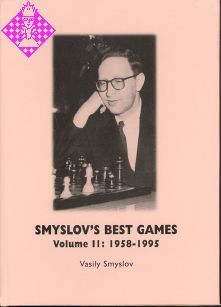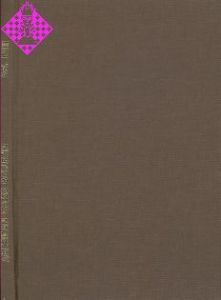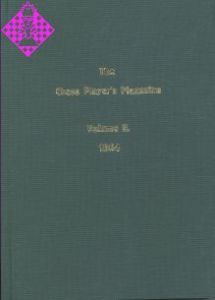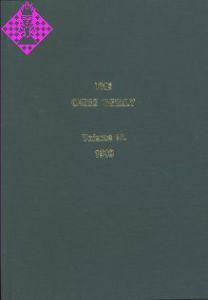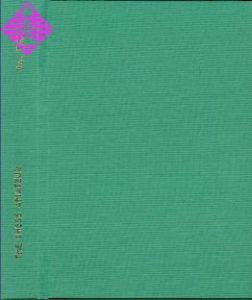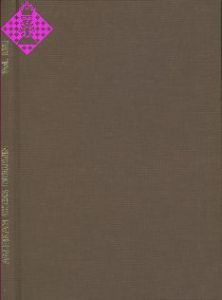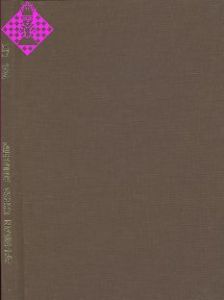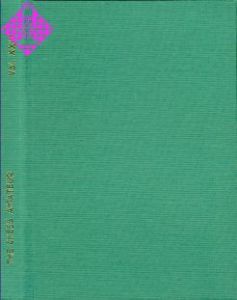Artikelnummer
LXSMYSBG2
Autor
Smyslov's Best Games - Vol. II: 1958 - 1995
456 Seiten, gebunden, Caissa 90-Olomouc, 2003
For more than half a century I have been taking part in chess competitions. With the leading masters of different generations I have played thousands of games, only a limited number of which have found their way into these two volumes. In them I wanted to reflect my best creative achievements, where logic of thought enables an artistic impression to be created, and to reflect my view on chess as an opportunity for the human spirit to aspire to the heights of a genuine art. Whether I have succeeded in this aim, it is for the reader to judge.
I achieved the greatest success in my chess career in 1957, when I defeated Mikhail Botvinnik in a match for the world championship. In the return match with Botvinnik, fate was not on my side. However, chess did not lose its fascination for me, and quarter of a century later, now at a more advanced age, I again contested the final candidates match for the world championship with the young Garry Kasparov.
The curve of my successes has been uneven, but my style of play has not undergone any significant changes.
In my play I rely on experience, knowledge and calculation, but more than anything on intuition, on that feeling for position that enables it to be evaluated correctly and deeply, as long as the passion for a struggle is burning.
Of course, over this period of half a century chess has changed. By the last decade of the 20th century an information explosion had occurred in all fields of human knowledge, and this was reflected in the play of the best chess players, to the aid of whom came a powerful compiler of collective experience - the computer.
Now I most often meet players who are armed not with books, but with a chess machine, enabling a quick reply to be given about the present state of an opening variation, or about an opponent. And yet books will never lose their instructional value, since the general laws of the game remain unchanged.
A philosophical axiom of the theory of Wilhelm Steinitz was excellently expounded by Emanuel Lasker in his Chess Manual. When an advantage has been gained, you must seek a combinative solution to the problem and take energetic measures, as otherwise the advantage will disappear.
A position changes with every move, and grasping its slightest changes, on which evaluation and concrete calculation depend, is a great skill in the practical struggle at the board. I hope that these two volumes of my best games will help the reader to understand a little better how to find his way through the endless variations of the labyrinth of Caissa.
Vasily Smyslov, Perface
I achieved the greatest success in my chess career in 1957, when I defeated Mikhail Botvinnik in a match for the world championship. In the return match with Botvinnik, fate was not on my side. However, chess did not lose its fascination for me, and quarter of a century later, now at a more advanced age, I again contested the final candidates match for the world championship with the young Garry Kasparov.
The curve of my successes has been uneven, but my style of play has not undergone any significant changes.
In my play I rely on experience, knowledge and calculation, but more than anything on intuition, on that feeling for position that enables it to be evaluated correctly and deeply, as long as the passion for a struggle is burning.
Of course, over this period of half a century chess has changed. By the last decade of the 20th century an information explosion had occurred in all fields of human knowledge, and this was reflected in the play of the best chess players, to the aid of whom came a powerful compiler of collective experience - the computer.
Now I most often meet players who are armed not with books, but with a chess machine, enabling a quick reply to be given about the present state of an opening variation, or about an opponent. And yet books will never lose their instructional value, since the general laws of the game remain unchanged.
A philosophical axiom of the theory of Wilhelm Steinitz was excellently expounded by Emanuel Lasker in his Chess Manual. When an advantage has been gained, you must seek a combinative solution to the problem and take energetic measures, as otherwise the advantage will disappear.
A position changes with every move, and grasping its slightest changes, on which evaluation and concrete calculation depend, is a great skill in the practical struggle at the board. I hope that these two volumes of my best games will help the reader to understand a little better how to find his way through the endless variations of the labyrinth of Caissa.
Vasily Smyslov, Perface
For more than half a century I have been taking part in chess competitions. With the leading masters of different generations I have played thousands of games, only a limited number of which have found their way into these two volumes. In them I wanted to reflect my best creative achievements, where logic of thought enables an artistic impression to be created, and to reflect my view on chess as an opportunity for the human spirit to aspire to the heights of a genuine art. Whether I have succeeded in this aim, it is for the reader to judge.
I achieved the greatest success in my chess career in 1957, when I defeated Mikhail Botvinnik in a match for the world championship. In the return match with Botvinnik, fate was not on my side. However, chess did not lose its fascination for me, and quarter of a century later, now at a more advanced age, I again contested the final candidates match for the world championship with the young Garry Kasparov.
The curve of my successes has been uneven, but my style of play has not undergone any significant changes.
In my play I rely on experience, knowledge and calculation, but more than anything on intuition, on that feeling for position that enables it to be evaluated correctly and deeply, as long as the passion for a struggle is burning.
Of course, over this period of half a century chess has changed. By the last decade of the 20th century an information explosion had occurred in all fields of human knowledge, and this was reflected in the play of the best chess players, to the aid of whom came a powerful compiler of collective experience - the computer.
Now I most often meet players who are armed not with books, but with a chess machine, enabling a quick reply to be given about the present state of an opening variation, or about an opponent. And yet books will never lose their instructional value, since the general laws of the game remain unchanged.
A philosophical axiom of the theory of Wilhelm Steinitz was excellently expounded by Emanuel Lasker in his Chess Manual. When an advantage has been gained, you must seek a combinative solution to the problem and take energetic measures, as otherwise the advantage will disappear.
A position changes with every move, and grasping its slightest changes, on which evaluation and concrete calculation depend, is a great skill in the practical struggle at the board. I hope that these two volumes of my best games will help the reader to understand a little better how to find his way through the endless variations of the labyrinth of Caissa.
Vasily Smyslov, Perface
I achieved the greatest success in my chess career in 1957, when I defeated Mikhail Botvinnik in a match for the world championship. In the return match with Botvinnik, fate was not on my side. However, chess did not lose its fascination for me, and quarter of a century later, now at a more advanced age, I again contested the final candidates match for the world championship with the young Garry Kasparov.
The curve of my successes has been uneven, but my style of play has not undergone any significant changes.
In my play I rely on experience, knowledge and calculation, but more than anything on intuition, on that feeling for position that enables it to be evaluated correctly and deeply, as long as the passion for a struggle is burning.
Of course, over this period of half a century chess has changed. By the last decade of the 20th century an information explosion had occurred in all fields of human knowledge, and this was reflected in the play of the best chess players, to the aid of whom came a powerful compiler of collective experience - the computer.
Now I most often meet players who are armed not with books, but with a chess machine, enabling a quick reply to be given about the present state of an opening variation, or about an opponent. And yet books will never lose their instructional value, since the general laws of the game remain unchanged.
A philosophical axiom of the theory of Wilhelm Steinitz was excellently expounded by Emanuel Lasker in his Chess Manual. When an advantage has been gained, you must seek a combinative solution to the problem and take energetic measures, as otherwise the advantage will disappear.
A position changes with every move, and grasping its slightest changes, on which evaluation and concrete calculation depend, is a great skill in the practical struggle at the board. I hope that these two volumes of my best games will help the reader to understand a little better how to find his way through the endless variations of the labyrinth of Caissa.
Vasily Smyslov, Perface
| EAN | 9788071895039 |
|---|---|
| Gewicht | 750 g |
| Hersteller | Caissa 90-Olomouc |
| Breite | 15 cm |
| Höhe | 21 cm |
| Medium | Buch |
| Erscheinungsjahr | 2003 |
| Autor | Wassili Smyslow |
| Sprache | Englisch |
| ISBN-10 | 8071895032 |
| ISBN-13 | 978-8071895039 |
| Seiten | 456 |
| Einband | gebunden |
| Name | Chess Agency CAISSA 90 |
|---|---|
| Adresse | Gorkeho 31 Olmouc 77900 Tschechien |
| fialav@hotmail.com |
005 Preface
007 Selected games 1958 - 1995
346 Tournament and match cross-tables
445 Summary of tournament and match results
451 Index of opponents
454 Index of openings
007 Selected games 1958 - 1995
346 Tournament and match cross-tables
445 Summary of tournament and match results
451 Index of opponents
454 Index of openings
Vasily Smyslov gewann 1957 die Weltmeisterschaft gegen Mikhail Botwinnik. Damit endete Band I der Partiesammlung Smyslov's Best Games 1935 - 1957. Wir haben Ihnen dieses Buch vor einiger Zeit vorgestellt und wärmstens empfohlen. Wir standen mit unserer Meinung nicht allein, denn in der Tat wurde es von der gesamten Schachwelt sehr gut aufgenommen.
Für den nun vorliegenden Band II hat Smyslov 186 eigene Partien aus den Jahren 1958 bis 1995 ausgewählt und kommentiert. Damit ist über die herausragende Qualität des Buches eigentlich schon alles gesagt. Unter den Gegnern Smyslovs finden wir die berühmtesten Namen dieser Zeit: Botwinnik, Bronstein, Fischer, Gligoric, Hort, Hübner, Iwantschuk, Karpow, Keres, Kortschnoj, Larsen, Petrosjan, Polugajewsky, Portisch, Reshevsky, Spassky, Tal und Uhlmann. Das Buch enthält alle wichtigen Turniertabellen sowie viele Diagramme.
Wir können diese Neuerscheinung allen fortgeschrittenen Schachfreunden empfehlen. Englische Sprachkenntnisse sollten vorhanden sein.
Schachmarkt 02/2004
Der nunmehr 83-jährige Ex-WeltmeisWassili Smyslow bildet zusammen mit seinen russischen Landsleuten David Bronstein (drei Jahre jünger) und Viktor Kortschnoi (zehn Jahre jünger) das langlebigste Spitzenschach-Trio der Welt, konnten doch alle drei einen Gutteil ihrer überragenden Spielstärke bis in ihr achtes Lebensjahrzehnt hikonservieren.
Der jetzt erschienene zweite Teil der Smyslow'sehen Partiensammlung setzt den ersten Band fort (siehe Besprechung in RE Nr. 3/04 auf S. 68) und umfasst den langen Zeitraum von nahezu 38 Jahren.
1958 musste Smyslow seinen erst ein Jahr zuvor gewonnenen Weltmeister-Titel im Revanche-Match an Michail Botwinnik zurückgeben, was jedoch seiner weiteren glanzvollen Schach-Laufbahn keinerlei Abbruch tat: Etliche Versuche in den folgenden WM-Zyklen scheiterten zwar auf der Ebene der Interzonenturniere und Kandidatenwettkämpfe (so z.B. die Niederlage gegen Geller 1965), jedoch gelang unserem Protagonisten 1983/84 im zarten Alter von 60/61 Jahren der Vorstoß ins Kandidatenfinale, wo er erst vom kommenden Titelträger Garry Kasparow gestoppt wurde (*x +0 =9 -4). Ersatzweise hielt sich Smyslow mit dem Gewinn der Seniorenweltmeisterschaft 1991 in Bad Wörishofen schadlos. Bei sechs Schacholympiaden von 1958-1995 erreichte er das phantastische persönliche Score von +50 =24 -1!
Im gesamten Zeitraum von 1958 bis 1995 beteiligte sich Smyslow an 110 internationalen Turnieren, von denen er 28 als Sieger oder Teil-Sieger beendete, zuletzt das Donner-Memorial in Amsterdam 1994 im Alter von 73 Jahren. Die Auflistung seiner Ergebnisse (S. 446-450) weist aus, dass er von 1958-1995 insgesamt 1802 Turnierpartien und Matchpartien gespielt hat, davon 604 Siege, 1035 Remisen und 163 Niederlagen (62,2% der möglichen Punkte).
Ein ausführlicher Tabellenteil (S. 346-444) gibt Auskunft über alle Turniere mit Smyslows Beteiligung von 1958-1995, dabei sind alle Rundenturniere mit Kreuztabellen wiedergegeben. Den Hauptteil (S. 7-345) bilden jedoch 186 ausgewählte und von Smyslow selbst kommentierte und analysierte Gewinnpartien, wobei jedes Spiel im Durchschnitt 2 Buchseiten umfasst. Diese Auswahl verdeutlicht zur Genüge, dass Smyslow zurecht als einer der allergrößten Endspielkünstler gelten muss, aber auch scharfe und kombinationsreiche Königsangriffe zu führen versteht, kurzum: sich als kompletter, universal agierender Schachvirtuose präsentiert. Zwei Partien sollen stellvertretend als Beleg für diese Auffassung dienen, wo zwei deutsche Spitzenspieler als „Opfer" herhalten mussten:
Uhlmann - Smyslow; Aljechin-Gedenkturnier Moskau 1971, Damenindisch E 18:
1.c4 Sf6 2.Sc3 b6 4.g3 Lb7 5. Lg2 Le7 6.0-0 0-0 7.d4 Se4 8.Ld2 d5 9.c:d5 e:xd5 10.Tc1 Sd7 11.Lf4 c5 12.d:c5 S:c3! 13.b:c3 S:c5 14.Le5 Te8 15.Te1 Se4 16.Da4 a6 17.c4 Lc5 18.e3 d:c4 19.D:c4 Tc8 20.De2? S:f2! 21.D:f2 L:f3 22.Lh3 T:e5! 23.L:c8 Lc6 24.Lh3 De8 25.Lg2 T:e3! 26.Kh1 L:g2+ 27.K:g2 De4+ 28.Kh3 De6+ 29.Kg2 Dd5+ 30.Kh3 Te6!
0:1 (Partie Nr. 241 auf S. 184ff, dort mit Anmerkungen).
Smyslow - Dr. Hübner, KandidatenVelden 1983, Englisch A 34:
1.Sf3 Sf6 2. c4 c5 3.Sc3 Sc6 4. g3 d5 5.c:d5 S:d5 6. Lg2 Sc7 7.d3 e5 8.Sd2 Ld7 9.0-0 Le7 10.Sc4 f6 11.f4 b5 12.Se3 Tc8 13.Sed5 S:d5 14.S:d5 0-0 15.f:e5 S:e5 16.Lf4 Sc6 17.a4 b4 18.Tc1 Le6 19.e4 Ld6 20.Le3 Sa5 21.d4! c4 22.Sf4 Lf7 23.Dg4! De8 24.Tce1 Sb3 25.Kh1 Kh8 26.Dh3! Tc7 27.e5! f:e5 28.d:e5 L:e5 29.Le4 g6 30.L:g6! Da8+ 31.Kg1 Lg8 32.L:h7! T:h7 33.Sg6+ Kg7 34.Dd7+ Kf7 35.T:f7+ L:f7 36.S:e5 Dd5 37.D:a7 Th5 38.T:f7 D:f7 39.Ld4+ S:d4 40.D:d4 Kh7 42.Tf1 Da7+ 43.Tf2! Dc5 44.Kf1 c3 45.b:c3 b:c3 46.De6! Dg5 47.Tf7+ Kh8 48.Dc8+ 1:0 (Partie Nr. 297 auf S. 288 ff, dort mit Analysen).
Smyslows Buch erscheint in englischer Sprache (ins Englische übersetzt von Ken Nest), was jedoch dem genussvollen Nachspielen der Partien in keiner Weise hinderlich erscheint. Auch die äußere Aufmachung (Festeinband und Fadenheftung) bürgt ebenso wie der Inhalt für Qualität, und somit hat sich der Ex-Weltmeister durch seine wertvolle Partiensammlung mit insgesamt 326 seiner besten Leistungen am Schachbrett (Band l und II zusammengenommen) selbst ein bleibendes Denkmal gesetzt. Welch ein Glück für die Schachwelt, dass Wassili Smyslow nicht - wie ursprünglich einmal angedacht - die berufliche Karriere eines Opernsängers gewählt hat!
Dr. W. Schweizer - Rochade 7/2004
Für den nun vorliegenden Band II hat Smyslov 186 eigene Partien aus den Jahren 1958 bis 1995 ausgewählt und kommentiert. Damit ist über die herausragende Qualität des Buches eigentlich schon alles gesagt. Unter den Gegnern Smyslovs finden wir die berühmtesten Namen dieser Zeit: Botwinnik, Bronstein, Fischer, Gligoric, Hort, Hübner, Iwantschuk, Karpow, Keres, Kortschnoj, Larsen, Petrosjan, Polugajewsky, Portisch, Reshevsky, Spassky, Tal und Uhlmann. Das Buch enthält alle wichtigen Turniertabellen sowie viele Diagramme.
Wir können diese Neuerscheinung allen fortgeschrittenen Schachfreunden empfehlen. Englische Sprachkenntnisse sollten vorhanden sein.
Schachmarkt 02/2004
Der nunmehr 83-jährige Ex-WeltmeisWassili Smyslow bildet zusammen mit seinen russischen Landsleuten David Bronstein (drei Jahre jünger) und Viktor Kortschnoi (zehn Jahre jünger) das langlebigste Spitzenschach-Trio der Welt, konnten doch alle drei einen Gutteil ihrer überragenden Spielstärke bis in ihr achtes Lebensjahrzehnt hikonservieren.
Der jetzt erschienene zweite Teil der Smyslow'sehen Partiensammlung setzt den ersten Band fort (siehe Besprechung in RE Nr. 3/04 auf S. 68) und umfasst den langen Zeitraum von nahezu 38 Jahren.
1958 musste Smyslow seinen erst ein Jahr zuvor gewonnenen Weltmeister-Titel im Revanche-Match an Michail Botwinnik zurückgeben, was jedoch seiner weiteren glanzvollen Schach-Laufbahn keinerlei Abbruch tat: Etliche Versuche in den folgenden WM-Zyklen scheiterten zwar auf der Ebene der Interzonenturniere und Kandidatenwettkämpfe (so z.B. die Niederlage gegen Geller 1965), jedoch gelang unserem Protagonisten 1983/84 im zarten Alter von 60/61 Jahren der Vorstoß ins Kandidatenfinale, wo er erst vom kommenden Titelträger Garry Kasparow gestoppt wurde (*x +0 =9 -4). Ersatzweise hielt sich Smyslow mit dem Gewinn der Seniorenweltmeisterschaft 1991 in Bad Wörishofen schadlos. Bei sechs Schacholympiaden von 1958-1995 erreichte er das phantastische persönliche Score von +50 =24 -1!
Im gesamten Zeitraum von 1958 bis 1995 beteiligte sich Smyslow an 110 internationalen Turnieren, von denen er 28 als Sieger oder Teil-Sieger beendete, zuletzt das Donner-Memorial in Amsterdam 1994 im Alter von 73 Jahren. Die Auflistung seiner Ergebnisse (S. 446-450) weist aus, dass er von 1958-1995 insgesamt 1802 Turnierpartien und Matchpartien gespielt hat, davon 604 Siege, 1035 Remisen und 163 Niederlagen (62,2% der möglichen Punkte).
Ein ausführlicher Tabellenteil (S. 346-444) gibt Auskunft über alle Turniere mit Smyslows Beteiligung von 1958-1995, dabei sind alle Rundenturniere mit Kreuztabellen wiedergegeben. Den Hauptteil (S. 7-345) bilden jedoch 186 ausgewählte und von Smyslow selbst kommentierte und analysierte Gewinnpartien, wobei jedes Spiel im Durchschnitt 2 Buchseiten umfasst. Diese Auswahl verdeutlicht zur Genüge, dass Smyslow zurecht als einer der allergrößten Endspielkünstler gelten muss, aber auch scharfe und kombinationsreiche Königsangriffe zu führen versteht, kurzum: sich als kompletter, universal agierender Schachvirtuose präsentiert. Zwei Partien sollen stellvertretend als Beleg für diese Auffassung dienen, wo zwei deutsche Spitzenspieler als „Opfer" herhalten mussten:
Uhlmann - Smyslow; Aljechin-Gedenkturnier Moskau 1971, Damenindisch E 18:
1.c4 Sf6 2.Sc3 b6 4.g3 Lb7 5. Lg2 Le7 6.0-0 0-0 7.d4 Se4 8.Ld2 d5 9.c:d5 e:xd5 10.Tc1 Sd7 11.Lf4 c5 12.d:c5 S:c3! 13.b:c3 S:c5 14.Le5 Te8 15.Te1 Se4 16.Da4 a6 17.c4 Lc5 18.e3 d:c4 19.D:c4 Tc8 20.De2? S:f2! 21.D:f2 L:f3 22.Lh3 T:e5! 23.L:c8 Lc6 24.Lh3 De8 25.Lg2 T:e3! 26.Kh1 L:g2+ 27.K:g2 De4+ 28.Kh3 De6+ 29.Kg2 Dd5+ 30.Kh3 Te6!
0:1 (Partie Nr. 241 auf S. 184ff, dort mit Anmerkungen).
Smyslow - Dr. Hübner, KandidatenVelden 1983, Englisch A 34:
1.Sf3 Sf6 2. c4 c5 3.Sc3 Sc6 4. g3 d5 5.c:d5 S:d5 6. Lg2 Sc7 7.d3 e5 8.Sd2 Ld7 9.0-0 Le7 10.Sc4 f6 11.f4 b5 12.Se3 Tc8 13.Sed5 S:d5 14.S:d5 0-0 15.f:e5 S:e5 16.Lf4 Sc6 17.a4 b4 18.Tc1 Le6 19.e4 Ld6 20.Le3 Sa5 21.d4! c4 22.Sf4 Lf7 23.Dg4! De8 24.Tce1 Sb3 25.Kh1 Kh8 26.Dh3! Tc7 27.e5! f:e5 28.d:e5 L:e5 29.Le4 g6 30.L:g6! Da8+ 31.Kg1 Lg8 32.L:h7! T:h7 33.Sg6+ Kg7 34.Dd7+ Kf7 35.T:f7+ L:f7 36.S:e5 Dd5 37.D:a7 Th5 38.T:f7 D:f7 39.Ld4+ S:d4 40.D:d4 Kh7 42.Tf1 Da7+ 43.Tf2! Dc5 44.Kf1 c3 45.b:c3 b:c3 46.De6! Dg5 47.Tf7+ Kh8 48.Dc8+ 1:0 (Partie Nr. 297 auf S. 288 ff, dort mit Analysen).
Smyslows Buch erscheint in englischer Sprache (ins Englische übersetzt von Ken Nest), was jedoch dem genussvollen Nachspielen der Partien in keiner Weise hinderlich erscheint. Auch die äußere Aufmachung (Festeinband und Fadenheftung) bürgt ebenso wie der Inhalt für Qualität, und somit hat sich der Ex-Weltmeister durch seine wertvolle Partiensammlung mit insgesamt 326 seiner besten Leistungen am Schachbrett (Band l und II zusammengenommen) selbst ein bleibendes Denkmal gesetzt. Welch ein Glück für die Schachwelt, dass Wassili Smyslow nicht - wie ursprünglich einmal angedacht - die berufliche Karriere eines Opernsängers gewählt hat!
Dr. W. Schweizer - Rochade 7/2004
Mehr von Caissa 90-Olomouc

